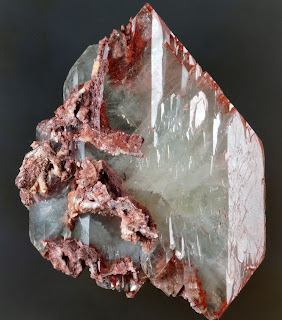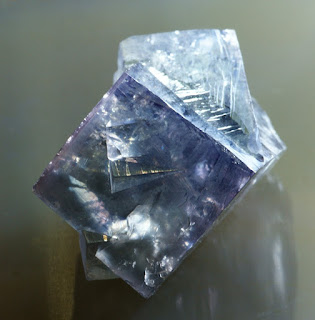Westgarth Forster 1821: "Cauk, or barytic, spar"

One of the treasured crystallized minerals from the mines of Northern England is the barium sulphate barite (or baryte). Beautiful doubly-terminated 6 cm blue barite from Frizington, Cumbria, with red areas resulting from hematite inclusions. Westgarth Forster (1821, pages 216-217), makes the following comments on this mineral: “ Cauk , or barytic , spar, is not generally of so pure a white as the calcareous spars. The writer of this has seen cauk spar of a dead white, but commonly it is of a yellowish, a brownish, or a reddish white, or of a flesh colour, sometimes crystallized and transparent, as at Dufton-fell , in the county of Westmorland. It seems to affect the peculiarity of having its crystals laminated, as radiating from a centre, but this radiation seldom amounts to a whole circle. It is commonly a dull ill-looking spar, frequently rising in in globes and irregular masses, and so exceedingly heavy, that miners have always imagined it contained metal...


